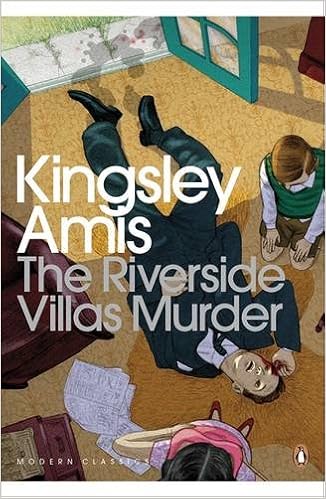
Kingsley Amis published The Riverside Villas Murder in 1973, and I read it not long after that, during a phase when I was very keen on Amis' work. Oddly enough, my enthusiasm for him faded after attending a talk by him at the Oxford Union - perhaps a salutary reminder for authors that events don't always have the desired effect on one's readership! There's no doubt that he was a talented writer, although I'm not sure time has been equally kind to everything that he wrote. But this particular novel is nowadays branded as a Penguin Modern Classic, and is certainly interesting to crime fans.
When I first read the book, I was intrigued that Amis was writing a homage to the classic detective story, but I felt disappointed with the resolution of the story, mainly because I found the whodunit element unsatisfactory. Re-reading the novel recently,with lowered expectations, I was pleasantly surprised. It's not a masterpiece, but it's interesting and very readable.
The events of the story are set in 1936, and Amis makes direct reference to detective fiction of the period. Anthony Berkeley is name-checked, while the protagonist, 14 year old Peter Furneaux, is lent a copy of John Dickson Carr's The Hollow Man, and the text includes a quote from that splendid story. Amis was much keener on Carr than on Christie, and the 'howdunit' aspect of the plot is the cleverest aspect of the whole novel.
Young Peter's attempts to broaden his sexual experience are rudely interrupted by the murder of an unpleasant chap called Inman, who has been threatening to reveal the dark secrets of supposedly respectable members of their suburban community. Peter doesn't get very far with 15 year old Daphne, but has more joy with a married neighbour, and their affair plays a significant part in the development of the plot. There's plenty of humour, and some neat characterisation, even though there's a surprising lack of tension in the build-up to the revelation of the culprit's identity. Despite its flaws, I enjoyed this book much more the second time around. Definitely worth a read, even though it's a stretch to call it a modern classic.